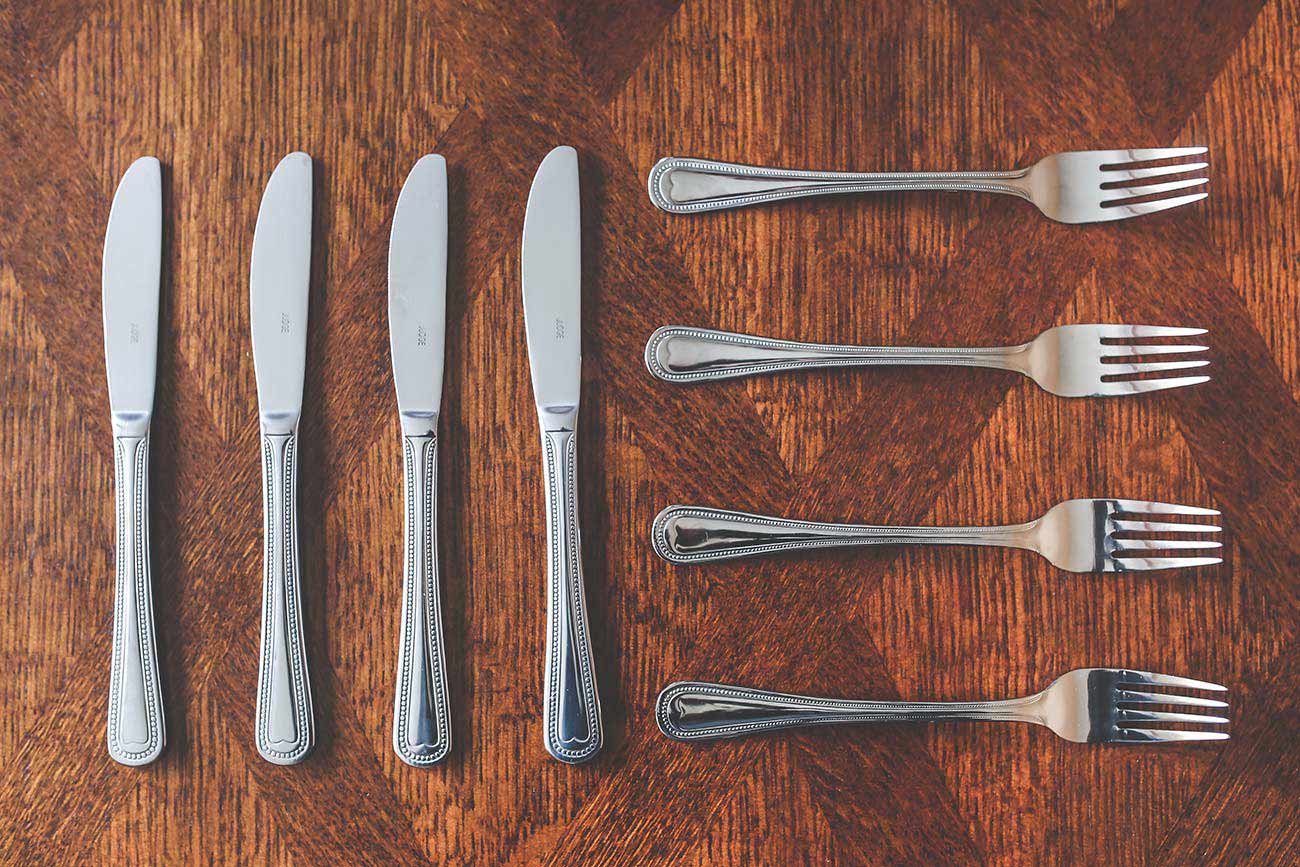Silverware is a term that is normally used when people are talking about items such as forks, knives, spoons, candlesticks, pitchers, bowls, and more. Essentially, it includes anything you might use at a dinner party that is silver in color. However, silverware isn’t always made of silver. It can be made of stainless steel, silver plated metal, and other materials. If it is real silver, it is made of 92.5% sterling silver and the remaining 7.5% is a base metal such as copper.
Look for a Sterling Silver Stamp
One of the easiest ways to find out if your silverware is made of real silver is to find a stamp that says “sterling silver.” If it was made in the United States after the 1850s, it will always be marked “Sterling” or “925.” If you are looking at your silver bowls, candlesticks, platters, cups, and other items of this kind, you will usually find this stamp on the bottom of the item.
When you look at flatware, such as knives, forks, spoons, and serving pieces, you will normally find this stamp on the back of the handle.
However, make sure that you are specifically looking for these two terms (Sterling or 925) because there are a number of companies that include the word “Silver” in their hallmark. For example, you might find International Silver, English Silver, German Silver, or other variations, and these pieces are not necessarily made of sterling silver.
Look for a Foreign Hallmark
Silverware that is made outside of the United States may have foreign hallmarks that indicate that the piece is made of sterling silver. There are many different hallmarks, so you will need to start by looking for a symbol or wording on your silverware, and then look it up to see if it is a sign of sterling silver.
There are many different foreign hallmarks, and some of the most common are as follows:
- Lion Passant: This is a stamp of a Lion, and it is used by Gorham Silver.
- EPNS: This actually stands for Nickel Silver (Electroplate Nickel Silver), and it is not real silver.
- 925, 800, or Coin: 925 indicates sterling silver, 800 indicates 80% silver, and Coin indicates 90% silver. You will be able to have concrete answers by testing the piece after you find the stamp.
When you want to find out whether your silverware is made of real silver, you should start by looking it over to find any hallmarks or stamps that can give you this information.
Test the Silverware to Find Out If It Is Real Silver
You can also perform a number of tests to find out if your silverware is made of sterling silver. First, you should check the silverware for spots where it is worn. Metal that is silver-plated will wear over time. You may see a different color metal underneath. If you find this kind of wearing on the silver, you are dealing with silver plated metal.
Another interesting fact is that sterling silver smells sweeter than other metals. A silver plated item might smell sour. If you have any pieces that are confirmed as silver, you can practice so that you recognize the smell.
Sterling silver has a greater density than nickel or copper that is silver-plated. Sterling has a density of 10.3 grams per cubic centimeter, whereas nickel is around 8.7 grams per cubic centimeter and copper is 8.96 grams per cubic centimeter. This means that sterling silver will feel more solid in your hands. If you toss a sterling piece up in the air, it will feel more substantive when it lands.
There are a few other tests, such as the acid test or using an XRF machine, but you should take the silverware to a silver specialist who can perform the test for you. The difference in value makes it important to know if your silverware is sterling or not.
